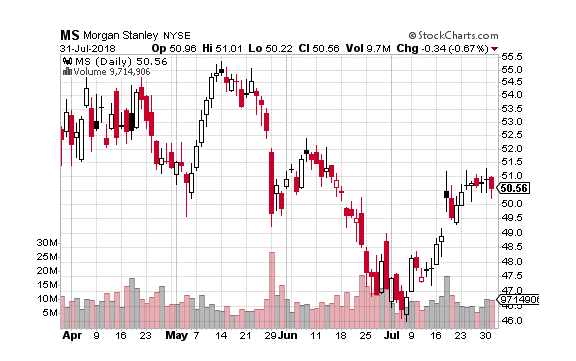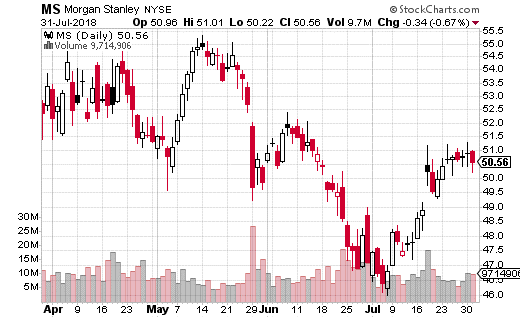The stock market is a mess right now.
The broad market volatility, however, does not change the bull thesis on cheap stocks. In the cheap, sub-$5 group, macro market movements can cause some noise in shares. But, the investment thesis on cheap stocks is predicated on huge moves higher in the long-term. Thus, near-term, macro-driven movements amount to nothing more than a side show.
From this perspective, now might be a good time to pile into some stocks under $5. These stocks are a high-risk bunch. But, they do have high-reward potential, too. Just look at the three stocks under $10 that I recommended buying in late March (Francesca’s (NASDAQ:FRAN), Express (NYSE:EXPR), and Pandora (NYSE:P).
All three stocks were considered high-risk losers at the time. Since, they have all risen by more than 30%.
With that in mind, here is a list of five cheap stocks, which I think have equally big upside potential over the next several months.
5 Cheap Stocks to Buy Before They Soar: Pier 1 (PIR)

Source: Shutterstock
Furniture retailer Pier 1 Imports (NYSE:PIR) has had a tough time getting its act together for several years.
Peer Restoration Hardware (NYSE:RH) has seen its stock more than double over the past year thanks to a red-hot housing market and robust demand for home furnishings. PIR stock, however, has collapsed by 50% during that same stretch. These problems aren’t new. Over the past five years, this stock has lost 90% of its value.
Having said that, there is visibility for a turnaround in PIR stock in the near future.
At its core, Pier 1 has been killed by rising e-commerce threats creating huge pricing and traffic headwinds. Pier 1, which stands somewhat square in the middle of price and quality, doesn’t really have anything special about the business to protect against these headwinds. Consequently, sales and margins have dropped in a big way.
But, the company recently unveiled a three-year strategic plan to turn the business around. The plan includes a re-launch of the Pier 1 brand this fall and bigger investments into omni-channel commerce capabilities and marketing.
No one knows whether or not this plan will actually work. But, home furnishings is a market with enduring demand, so that helps. Plus, search interest related to the company is actually starting to grow on a year-over-year basis, illustrating that this plan is off to a good start.
Meanwhile, PIR stock is dirt cheap. This company used to have earnings power of $1 per share. Even half of that earnings power ($0.50) would be huge for a $2 stock. At $0.50 per share in earnings power, it wouldn’t be unreasonable to see this stock hit $8 (a market-average 16x multiple).

Source: Shutterstock
Much like Pier 1, savings-king Groupon (NASDAQ:GRPN) feels like one of those companies that was loved yesterday but will be forgotten tomorrow.
But, I don’t think that’s true. I get that the savings and deals market is commoditized now. I also understand that Groupon really isn’t a household name for coupons like it used to be.
But, I’m a numbers a guy. And the numbers are pretty good here. The customer base is actually still growing (up more than 2% year-over-year last quarter). Thus, global popularity of the Groupon platform is only growing.
Meanwhile, margins are improving thanks to management’s focus on higher-margin businesses. Operating expenses are also being removed from the system, so the company’s overall profitability profile is dramatically improving (gross profit per active customer on a trailing twelve month basis was up 3% year-over-year last quarter).
Aside from the numbers, Groupon has also launched an aggressive advertising campaign with hyper-relevant Tiffany Haddish. I think this campaign will have a long-term positive effect on usage, which could drive the stock higher.
Plus, the company is putting itself up for sale, and some analysts think this company can fetch a $12 takeover price.
Put it all together, and it looks like GRPN stock could have a big time rally in the back half of 2018.
5 Cheap Stocks to Buy Before They Soar: Zynga (ZNGA)
I’m not a huge fan of the mobile gaming sector. It’s a tough space plagued with competition and low margins. Plus, competition is only building thanks to social media apps becoming increasingly multi-purpose.
But, mobile gaming company Zynga (NASDAQ:ZNGA) seems to have found the key to success in the mobile gaming world.
Zynga used to be a mega-popular browser game company with tons of users. But then the company overreached by branching into games that had heavy overlap with the traditional video game market, like sports titles. They couldn’t compete in that market. Eventually, the over-extension sparked user churn, and ZNGA stock spiraled downward.
That forced Zynga to re-invent itself into something much more relevant and defensible. They did just that. Zynga has transitioned its business model from web-focused to mobile-first while narrowing its gaming title focus. This pivot has streamlined operations, re-invigorated top-line growth, cut costs and improved profitability.
Consequently, the numbers supporting Zynga are pretty good. Mobile revenue growth was 13% last quarter. Mobile bookings growth was 10%. The company also reported its biggest mobile audience in over four years, with 23 million mobile daily active users (+24%) and 82 million mobile monthly active users (+30%). Zynga also reported a net profit in quarter, versus a loss in the year ago quarter.
From where I sit, this pivot appears to be in its early stages. Mobile is a secular growth narrative, and ZNGA has developed a gaming portfolio that is focused and tailored to that growth narrative. Thus, so long as mobile engagement heads higher, Zynga’s numbers should get better. Better numbers will inevitably lead to a higher stock price.
5 Cheap Stocks to Buy Before They Soar: Arotech (ARTX)
There is no hiding the fact that the defense sector is hot right now.
President Donald Trump came into office, upped the ante on defense and military spending, and in response, the whole world is spending more on defense and military.
Defense contractors win when this happens. That is why mega-cap defense contractors like Lockheed Martin (NYSE:LMT) and Boeing (NYSE:BA) have been on fire for the past several quarters.
But one micro-cap defense contractor that has missed out on this rally is Arotech (NASDAQ:ARTX). Over the past several years, the financials at Arotech haven’t gained any ground. Five years ago, revenues were $88 million and operating profits were $3.5 billion. Last year, revenues were $98 million and operating profits were $2.9 million.
In other words, profits haven’t risen in five years. When profits don’t go up, the stock tends not to go up. It is a simple relationship.
But, profits are stabilizing. Adjusted earnings are expected to be between $0.15 and $0.18 per share this year, versus $0.17 per share last year. When profits go from declining to stabilizing, they usually go to growth next.
And, when profits go up, stocks tend to go up.
As such, it looks like Arotech is finally joining the tide when it comes to big boosts in defense and military spending. This tide will inevitably lift Arotech’s earnings power substantially, and ARTX will rally as a result.
5 Cheap Stocks to Buy Before They Soar: Blink Charging (BLNK)

Source: Shutterstock
When it comes to cheap stocks, there are few as volatile as Blink Charging (NASDAQ:BLNK).
Over the past year alone, BLNK stock has gone from $30 to $5 in a multi-month slide, before popping from $5 to $15 in a few days. Then, it slid for a few weeks to $9, before plunging overnight to $3. BLNK stock slid to under a $1.50 in a few weeks, then rallied to over $6 in a few days. Ever since, it has slid for a few months to under $3.
This volatility won’t give up any time soon. Thus, if you want to avoid volatility, I’d say avoid BLNK stock.
That being said, if this company’s secular growth narrative surrounding building a network of electric vehicle charging stations globally materializes within the next 5 years, this stock could be a 5-to-10 bagger.
It is a big risk. But, eventually, global infrastructure will need to match demand. At that point in time, there will be some huge contracts awarded to electric vehicle charging station companies.
Will Blink be one of them? Perhaps. Tough to tell. But if they do land some big contracts, this stock could have another huge pop in a short amount of time.
As of this writing, Luke Lango was long FB, PIR, GRPN, and ARTX.









